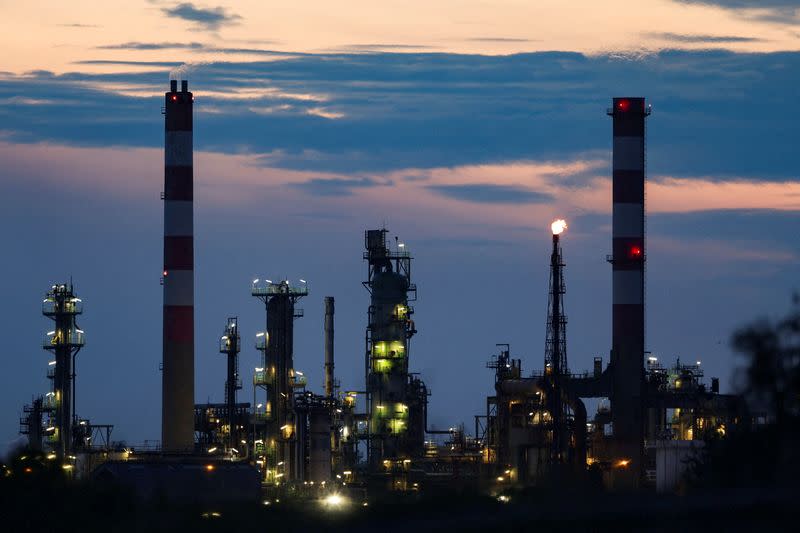Oil falls for fourth straight session on US inflation jitters

By Shariq Khan
NEW YORK (Reuters) -Oil prices fell for a fourth consecutive session on Thursday and settled at multi-month lows as the prospect of higher-for-longer U.S. interest rates raised worries around demand growth in the world's biggest oil market.
Brent crude futures settled lower by 54 cents, or 0.7%, at $81.36 a barrel, the lowest since January. U.S. West Texas Intermediate (WTI) crude futures fell 70 cents, or 0.9%, to $76.87 a barrel, a three-month low.
S&P Global data showed accelerating U.S. business activity this month, but manufacturers also reported a surge in prices for a range of inputs, suggesting a pickup in goods inflation in the months ahead.
On Wednesday, minutes from the U.S. Federal Reserve's latest policy meeting showed policymakers remain doubtful if current interest rates are high enough to tame stubborn inflation.
High interest rates increase the cost of borrowing, which can slow down economic activity and dampen demand for oil.
Also weighing on the market, U.S. crude stocks rose by 1.8 million barrels last week, according to the Energy Information Administration, compared with an estimated draw of 2.5 million barrels.
However, the EIA reported U.S. gasoline demand at its highest since November, providing some support for energy markets ahead of the Memorial Day holiday weekend, which is considered the start of the U.S. summer driving season. U.S. gasoline consumption makes up around 9% of global oil demand.
"It was a pretty good report for gasoline, everything pretty much hit the positive side of the ledger," Mizuho analyst Bob Yawger said. "However, one report does not make a trend, so everyone will be watching if it can continue to perform going forward."
Investors are also looking ahead to the June 1 meeting of the Organization of Petroleum Exporting Countries and its allies, together called OPEC+, where the group will decide its output policy.
Russia said it exceeded its OPEC+ production quota in April for "technical reasons" and will soon present to the OPEC Secretariat its plan to compensate for the error, the Russian Energy Ministry said late on Wednesday.
Recent weakness in crude oil prices raises the likelihood that OPEC+ will maintain its existing production curbs at least through the end of September, said Andrew Lipow, president of Houston-based Lipow Oil Associates.
(Reporting by Shariq Khan in New York, Paul Carsten and Noah Browning in London; Additional reporting by Arathy Somasekhar and Sudarshan Varadhan; Editing by David Goodman, Kirsten Donovan, Jan Harvey, Will Dunham and Leslie Adler)

 Yahoo Finance
Yahoo Finance 